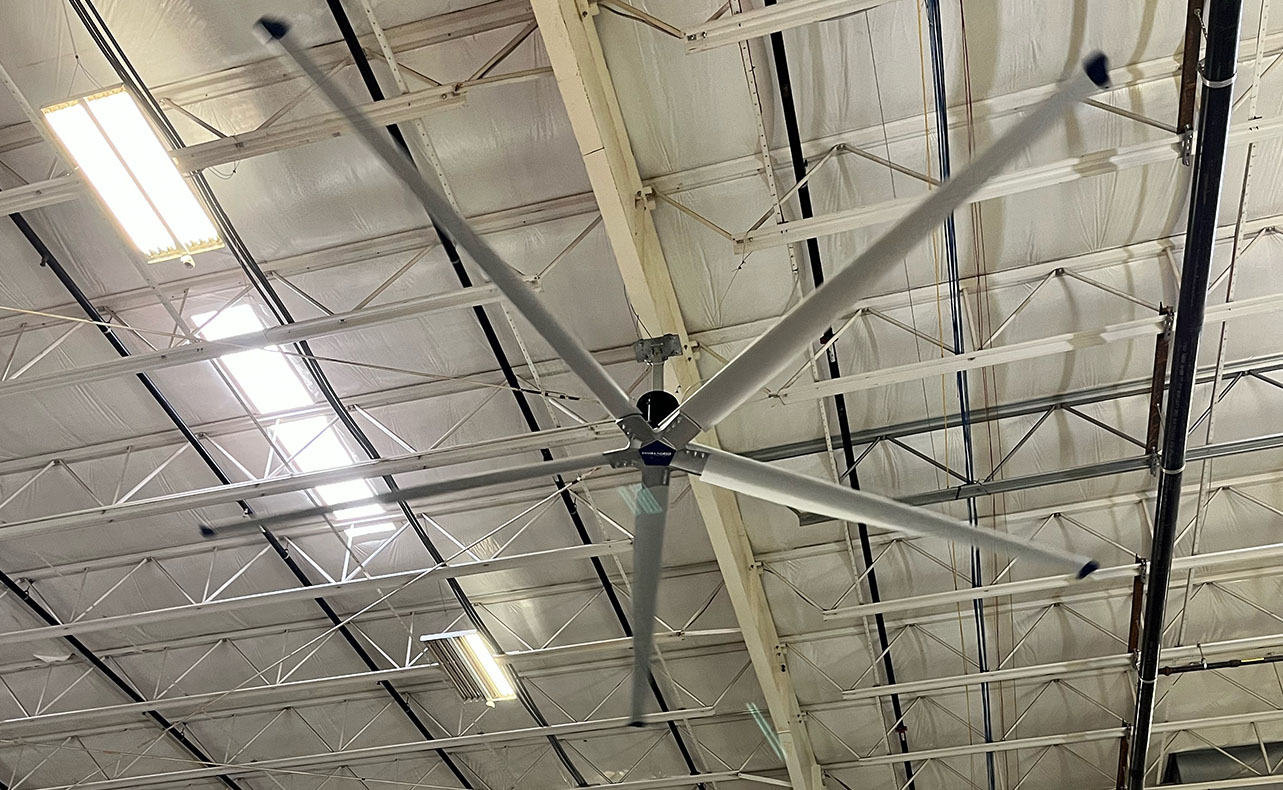
Happier Clients by Controlling Thermal Comfort
Understanding Thermal Comfort
Thermal comfort, oh… thermal comfort. Why does it matter? It’s a point where a person feels satisfied with the surrounding environment that they are in. Getting to a point of thermal comfort is SO important for spaces like homes, offices, manufacturing plants, warehouse facilities, and almost every single indoor environment because it allows occupants get to a point of satisfaction and peak productivity.
"HVLS fans efficiently circulate HUGE volumes of air throughout HUGE spaces, providing a uniform air distribution and an overall improved air quality. "
The Importance of HVAC Systems
HVAC, as you know, is a main piece of any modern building design, absolutely crucial for managing any indoor climate and ensuring comfort through any season, year-round. The efficiency of these systems directly impacts the thermal comfort of building occupants. Things that can impact Thermal Comfort can be the indoor temperature, radiant temperature, air velocity, humidity, the level of clothing that person is wearing and at the very detailed level, the amount of metabolic heat that a person can release! Being able to optimize this is the goal of HVAC systems, to make people comfortable to improve buying decisions, health, and productivity. A forward thinker like yourself will be able to combat any of these that become out of line in the design/building stage.
How Can We Advance HVAC Systems to Improve Thermal Comfort?
What technologies can you begin implementing today to make advancements in building projects to improve operational efficiency and thermal comfort:
1. HVLS (High-Volume, Low-Speed) Fans:
- Function: HVLS fans efficiently circulate HUGE volumes of air throughout HUGE spaces, providing a uniform air distribution and an overall improved air quality.
- Impact: In turn, you will receive increased energy savings by reducing load on HVAC systems and covering corner to corner air coverage to improve thermal comfort throughout an entire space.
2. Building Automation Systems (BAS):
- Function: BAS integrates various building services including heat, ventilation, air conditioning, lighting, and other systems into a single centralized control system.
- Impact: By integrating and automating the operations of HVAC/circulation systems based on real-time data and occupancy, the BAS system can enhance overall energy efficiency, reduce operating costs, and maintain a more consistent comfort level across different zones of a building.
3. AI-Driven HVAC Systems:
- Function: AI-driven systems use machine learning algorithms and predictive analytics to optimize the HVAC operations. They learn from historical data and continuously adapt to any and all changing environmental conditions and occupancy patterns.
- Impact: AI integration facilitates smarter energy use, predicts maintenance needs before they become a critical issue, and ensures optimal thermal comfort by automatically adjusting settings to the most efficient modes based on their surrounding environment.
Designing for the Future
Building standards are always evolving and as we move forward, a focus on organizational sustainability increases, the future of HVAC systems looks toward integrating better use of the energy that we use.
Enhancing thermal comfort while reducing the environmental impact of building operations.
Which starts with you, staying ahead of these trends is crucial so that buildings are completed with not only high thermal comfort but also future-proof and sustainable operational capabilities.
Understanding and applying these technologies to any building project is key to creating an environment that enhances thermal comfort, raising the floor on worker well-being and productivity.
Another significant impact HVAC systems can have on is Indoor Air Quality (IAQ). If you would like to learn more about improving your building projects IAQ, click here.
